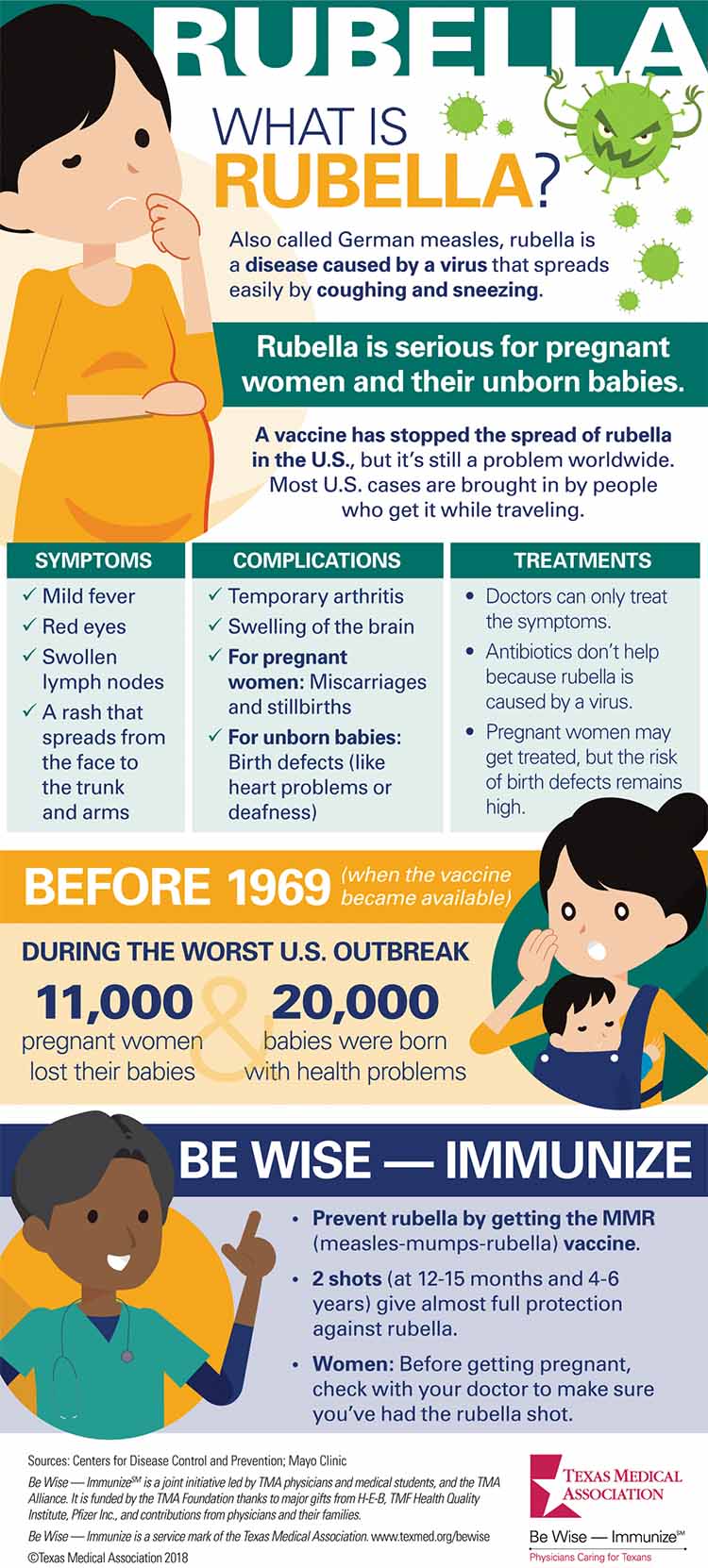The virus that causes rubella often appears deceptively mild — so mild in fact that one-quarter to half of people infected with it will have no symptoms at all, according to the Centers for Disease Control and Prevention (CDC).
For those showing symptoms, a typical case causes a low-grade fever, sore throat, and telltale rash that causes rubella to be confused with measles. Hence, it’s sometimes called “German measles.”
But rubella is also a killer, and it is especially dangerous to pregnant women because it causes miscarriages, stillbirths, and severe birth defects. The last major U.S. epidemic in 1964-1965 infected about 12.5 million people, caused 11,000 pregnant women to lose their babies, led to the deaths of 2,100 newborns, and resulted in 20,000 babies with birth defects.
Vaccination is the best protection. After the rubella vaccine was introduced in 1969, cases of the disease dropped so far that today fewer than 10 Americans are reported to have rubella each year, CDC says. Most cases are contracted outside the country.
The rubella vaccine is included in the combined “MMR” vaccine because it also protects against mumps and measles. A brief concern that the MMR vaccine might increase the risk for autism has since been thoroughly debunked. A single study that claimed to have found a link between the vaccine and autism was ultimately declared fraudulent.
There is a lot of misinformation about vaccines, so each month Texas Medicine highlights a disease that childhood and adult immunizations can prevent. The material is designed to help you talk to your patients and to help them understand the benefits of vaccines. You can find a copy of this infographic to print out and a helpful video for your patients at www.texmed.org/TalkRubella.
Download a printable copy of the infographic below.

Tex Med. 2018;114(12):47
December 2018 Texas Medicine Contents
Texas Medicine Main Page
Last Updated On
September 19, 2024
Originally Published On
November 26, 2018